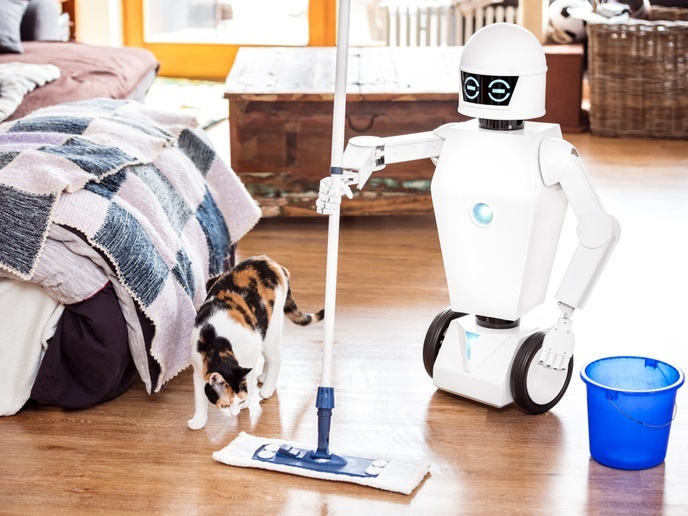Personal robots at your service
Real-life robots (some inspired by fictional characters) are nothing new. Robots have been with us for decades. The first digitally operated and programmable robot was invented in the 1950s. Fast forward to the present day and the global sales volume of industrial robots has tripled, reaching 420 000 in 2018. However, robots are no longer confined to factory assembly lines. A new generation of service robots – humanoid robots designed to assist and interact with people in very intuitive ways – are in the making. As personal care robots, these machines have enormous potential. The EU-funded APRIL project, the first Marie Skłodowska-Curie Innovative Training Networks European Industrial Doctorate (ITN-EID), is paving the way for personal robots. “APRIL’s main aim was to establish the leading European Industrial Doctorate Centre for cross-disciplinary and cross-sectoral training in developmental and social cognitive systems, human-robot interaction and personal robotics,” states project coordinator Angelo Cangelosi. “Training and research activities were organised around the four pillars of Scientific Excellence, Technological Innovation, Future Leaders and Entrepreneurship.” According to Cangelosi, who teaches machine learning and robotics at the University of Manchester, APRIL is training the next generation of early-stage researchers (ESRs) and creating strategic synergies between Plymouth University’s Centre for Robotics and Neural Systems (CRNS) and the AI Lab of industry partner SoftBank Robotics. The CRNS is one of the leading international groups in the area of human-robot interaction, cognitive systems, developmental robotics and computational neuroscience. SoftBank Robotics designs and manufactures interactive and friendly robots that are humanoid in form (to help social interaction).
Research and training across institutions and disciplines
APRIL ESRs focused on five scientific and technological challenges in personal robotics. The list covered sensorimotor schema development, emotional bootstrapping, contingent interaction, grounded communication and deep learning for abstract reasoning. The project’s main deliverable was interdisciplinary and cross-disciplinary training of the five ESRs and additional PhD students in the two institutions. The other was the organisation of a series of training events for machine learning and robotics. As for the ESRs who completed their PhDs, they are now working in industry and in public research institutions. “This shows the value of cross-sectoral training for PhDs and the impact of their work in both industry and academia. The ESRs benefited from secondments and specialised complementary training in six associated partners sites from industry, academia and robot user groups,” notes Cangelosi. The PhD research projects investigated open fundamental scientific and technological challenges. One such challenge was embodied and situated cognition. Another was developmental learning and adaptation. The projects also addressed social learning and interaction in dynamic environments, as well as bottom-up cognitive bootstrapping and user-centred approaches to safe interaction.
Skills development for industry and academia
As regards the EID, this was open to the participation of external students through some of the training events and web repository of training materials. According to the APRIL website, the EID strategically adopted a key entrepreneurial ethos with a unique Coaching Programme for a tailored Individual Skills Development Plan. This helps to equip PhD students with a radical cross-sector and interdisciplinary skill- and mindset. Ultimately, this approach combines research on developmental and social cognitive systems, together with industry-led hands-on experiments on the application of human-robot interaction and assistive systems.
Keywords
APRIL, robots, robotics, learning, human-robot interaction, European Industrial Doctorate, cross-sectoral training, machine learning, early-stage researcher, social interaction, deep learning







